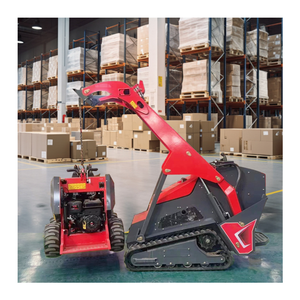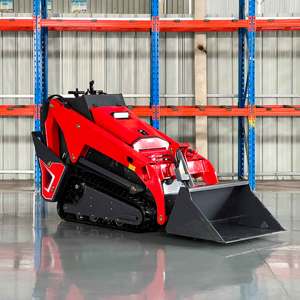
All categories
Featured selections
Trade Assurance
Buyer Central
Help Center
Get the app
Become a supplier

(8534 products available)














































A used log loader is a type of forestry machinery used to load logs onto trailers or trucks for further transportation. There are various types of log loaders, as follows:
Stationary log loaders are typically used in places like sawmills, log yards, or wood processing facilities. These loaders are usually mounted on a fixed platform. Despite their lack of mobility, stationary log loaders have impressive loading capacities and operational efficiency. They can load logs onto conveyors or processing equipment with high precision and speed.
Truck-mounted log loaders are also known as knuckleboom loaders. These loaders are mounted on the back of trucks or trailers. The advantages of using truck-mounted log loaders are their flexibility and maneuverability. Operators can easily transport them to different job sites. Also, the knuckleboom design allows for increased reach and versatility during the loading process.
Log trailers with integrated loaders are designed to be pulled by tractors or other types of vehicles. These loaders are commonly used for harvesting operations in forests. They streamline the process of loading cut logs from the forest and can facilitate efficient transportation to processing facilities. In addition, the combination of a trailer and integrated loader provides good stability and control on uneven forest terrain.
Harbor log loaders are specifically designed for the handling of logs in port facilities or waterfront areas. They are typically mounted on tracks or wheels to allow for movement along the dock. Harbor log loaders have the ability to offload logs from ships or barges as well as to stack them in waterfront storage yards. Due to their large capacity and efficiency, these loaders can help streamline the logistics of timber export and processing.
Capacity: Log loaders have a specific weight capacity, which is the maximum weight of logs it can carry and unload.
Engine power: It is the power output of the log loader's engine. The engine power determines the operating speed and efficiency of the log loader.
Lifting height: Lifting height indicates the maximum height the log loader can raise and stack the logs.
Reach: The maximum reach of the log loader is the horizontal distance it can extend to pick up or place the logs.
Control system: The control system of the log loader is responsible for operating the functions of the machine, such as the handling of logs, the traction of the unit, and others.
Driving mode: The driving mode of the log loader may have different options, such as four-wheel drive, track drive system, etc.
Regular inspection: Check the condition of the machine, including the hydraulic system, electrical system, etc., find out the problem in time, and repair and maintain it to avoid potential safety hazards during the use of the machine.
Lubrication: Lubricate the moving parts of the log loader, such as the boom, joints, and cylinders, to ensure the smooth operation of the machine and reduce wear and tear.
Cleaning: Regularly clean the surface and surrounding environment of the log loader, remove dirt and debris, and prevent the accumulation of foreign objects from affecting the heat dissipation and ventilation of the machine.
Driving system maintenance: Check and maintain the driving system of the log loader, such as the engine, transmission, etc., regularly replace the oil, filters, and other parts, and ensure the reliability and performance of the driving system.
Hydraulic system maintenance: Inspect and maintain the hydraulic system of the log loader, including the hydraulic oil, pipelines, seals, etc., to ensure the normal operation of the lifting and handling functions.
Replacement of wearing parts: Regularly inspect the wearing parts of the log loader, such as the tires, chains, and sprockets, and replace the parts that are damaged or worn to ensure the safety and performance of the machine.
The following are some scenarios in which a used log loader can be used.
The first step in wood production is to cut down trees or gather logs from forests. The log loader can be used to pick up and carry harvested wood in various wood extraction operations, such as timber harvesting, thinning, and clear-cutting.
In the timber industry, after the logs are cut and processed, they need to be transported to the sawmill. Log loaders are often used to load, unload, and transfer logs between trucks and storage areas. In addition, log loaders can also load logs onto train cars or ships for long-distance transportation.
Log loaders can also be used to sort and stack logs at sawmills, wood processing plants, or log yards. In sawmills, they can load logs onto conveyors or decks, ready for further processing. Log loaders can also stack logs neatly to facilitate inventory management and maximize storage space utilization in log yards.
Log loaders are also commonly used in the maritime industry. They can be used to load logs onto barges or ships for export or transfer between different ports. The ability of log loaders to operate on water makes the loading process more efficient and convenient.
Log loaders are not only limited to the timber industry but also have applications in the construction and land clearing industries. In construction projects or land clearing operations, log loaders can be used to move and clear trees and logs, making way for infrastructure development or site preparation.
In addition to the above scenarios, log loaders have many other applications in various industries, such as waste handling, recycling, and landscaping. As a versatile and powerful machinery, the log loader plays a critical role in improving operational efficiency and productivity in many fields. Buyers can find a wide variety of log loaders for sale on Alibaba.com to meet different application needs.
Consider the amount of wood that needs to be handled and the frequency of use. If large volumes of wood are handled daily, a high-capacity log loader may be required. For businesses with infrequent usage or lower wood handling volumes, a smaller log loader may suffice.
Consider operating conditions such as terrain, weather, and surface. For rugged terrain, a sturdy log loader with good stability and off-road capabilities is required. In corrosive or humid environments, choosing a log loader with rust-proof coatings or materials can extend its service life.
Consider the balance between power and fuel efficiency of the log loader, select the appropriate power model according to the operating capacity, and pay attention to the fuel consumption rate under different working conditions.
Consider the reputation and after-sales service of the log loader brand, and choose a reliable and reputable brand or supplier. Additionally, the performance and reliability of the log loader should also be considered.
Choose a log loader with easy maintenance and strong technical support. This can reduce maintenance costs and downtime, thereby improving the efficiency of wood handling.
Q&A
Q1: What are the main advantages of using a log loader?
A1: A log loader has many benefits. It can load and move large quantities of logs efficiently. It also has a big reach and can access logs in hard-to-reach areas, making it versatile. Additionally, a log loader can be operated from a safe distance away from the logs, enhancing operator safety.
Q2: What is the difference between a grapple loader and a knuckleboom loader?
A2: A grapple loader is usually mounted on a trailer or truck and uses a grappling claw to pick up and move logs. A knuckleboom loader, on the other hand, is typically mounted on a forestry machine, and it uses a grapple to handle logs. Knuckleboom loaders are usually more flexible and can handle more volume.
Q3: What are the main factors to consider when buying a used log loader?
A3: The condition of the machine is very important, and it is a good idea to have it inspected by a professional mechanic. The machine's hours of use are also important, and it is helpful to know the machine's maintenance and service history. Additionally, the machine's size, reach, and lifting capacity should match the specific needs of the jobs it will be used for.